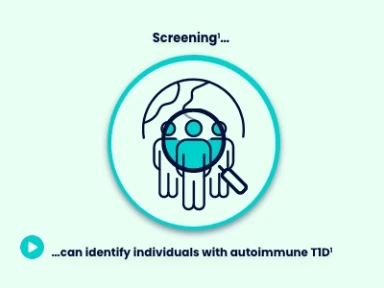- Resource
- BR1DGE
- Early Detection
- Video
Early Identification: Diagnostic Challenges in T1D
Expert interviews discussing early identification of T1D including diagnosis and misdiagnoses
.png/jcr:content/1190x500_MonitoringEarly%20Identification%20Diagnostic%20challenges%20in%20T1D%20(Expert%20Interview).png)
Learning Objectives
- Shed light on common reasons and challenges leading to misdiagnosis of T1D
- Highlight the relevant criteria for timely and accurate T1D diagnosis

Summary
The most common reason for misdiagnosis in people with T1D is misdiagnosis of having type 2 diabetes (T2D).
Features that would lead to considering T1D include a family history of T1D, family history of autoimmune diseases, or having a T1D patient phenotype (i.e. lack of obesity, failing T2D drugs). An individual who presents with a rapidly progressing picture of hyperglycemia, when there is no good control very early on, may have T1D.
Many children are being misdiagnosed and are dying of diabetic ketoacidosis. In adults, it's a bit more subtle, the destruction process of the beta cell can go quite slow. Adults can maintain functional beta-cell mass for a couple of years, maintain C-peptide for a couple of years. To test T1D HCPs should consider measuring both antibodies and C-peptide.
MAT-GLB-2501240-1.0 - 04/2025



